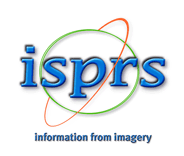General Plan of Activities
- Online hyperspectral pigments library
- TPP spectral library is the reflectance spectrum library of commonly used pigments, which was established by the Beijing Key Laboratory for Architectural Heritage Fine Reconstruction & Health, Beijing University of Civil Engineering and Architecture. The TPP spectral library contains the reflectance spectra of most commonly used paints, including mineral pigments, plant pigments, and synthetic pigments. The spectrum is collected by ASD FieldSpec4 portable spectroradiometer, and the wavelength range covers visible light to near infrared (0.4-2.5μm).
- As a non-invasive investigation method, hyperspectral imaging technology has outstanding performance in the research of virtual restoration of painted cultural relics, mainly used in pigment analysis, hidden information mining, fuzzy pattern enhancement and disease detection extraction. It not only realizes the permanent preservation of painted cultural relics, but also can finely express the characteristics of painted cultural relics.
- Through pigment analysis, we can speculate relevant information of unknown paintings, such as painting age and author, to provide basis for cultural relics identification. Implicit information mining is mainly used to enhance the spectral difference between different pigments, and display information invisible to the naked eye, such as manuscript, physical repair traces, etc.
- Fuzzy pattern enhancement highlights the object of interest through gray difference. The disease detection and extraction shall investigate and locate the disease location, and formulate corresponding prevention and protection measures. Implicit information mining and fuzzy pattern enhancement can reproduce the original pattern to a certain extent, which is called "restoration" in relevant research. (Restore or recover)
- Benchmarking (contest / challenges)
- HWDB1.1 handwritten Chinese character dataset is created by Institute of Automation, Chinese Academy of Sciences. The dataset contains 1,176,000 images of characters including 3,755 texts (GB2312-80, level-1), 171 numbers and punctuations written by 300 people, which is available for intelligent recognition research on cultural heritage such as tablet, calligraphy and painting.
- For more details, please visit:
- http://www.nlpr.ia.ac.cn/databases/handwriting/Offline_database.html
- The ridge beast is a decorative component placed on the ridge of Chinese historic buildings, which plays a unique and important role in the field of art and culture. In order to automatically identify and locate the type and position of the ridge beast from a given image, to support the fine three-dimensional reconstruction of historic buildings and assist experts in chronological discrimination efficiently, we have established a dataset of ridge beasts. According to the sequence and characteristics of the type of the beasts, this detection tool is able to accurately locate and identify the targeted beast from given images. The dataset contains 13760 objects in total. Users can divide the test set and training set according to their own purpose for the application of target detection algorithm.
- For more details, please visit:
- https://github.com/YuhangJi/Ridge-Beast-Detection
Event Organization
- Co-organizing a Heritage Conservation Session on the Digital Belt and Road Conference, September 2022 http://www.dbeltroad.org
- Organize a series of online invited lectures on three-dimensional visualization and virtual restoration of cultural heritage (2023-2025)
- Organizing a workshop on “cultural heritage modeling and virtual restoration” during ISPRS Geospatial Week in 2023 (every 2 years)
- Co-organize CIPA Symposium (International Committee of Architectural Photogrammetry) https://www.cipaheritagedocumentation.org
- Organizing an International Forum on Cultural Heritage Visualization and Virtual Restoration in 2024
- Organizing a workshop on “cultural heritage modeling and virtual restoration” during ISPRS Geospatial Week in 2026
- Organizing an International Forum on Cultural Heritage Visualization and Virtual Restoration in 2025
- Organizing technical sessions in ISPRS Congress in 2026
Publications
- Editing a volume in ISPRS Book Series on “Cultural Heritage Visualization and Virtual Restoration”, with controbitions from WG members
- Publishing slected datasets for collaborative research and benchmarking by ISPRS community
- Editing special joural issues based on the outcomes from the proposed events
- Cultural Heritage Research Biennial Report
Collaborations
CIPA, HIST and ICMOS China
More in China and Italy.
WG IV/11






